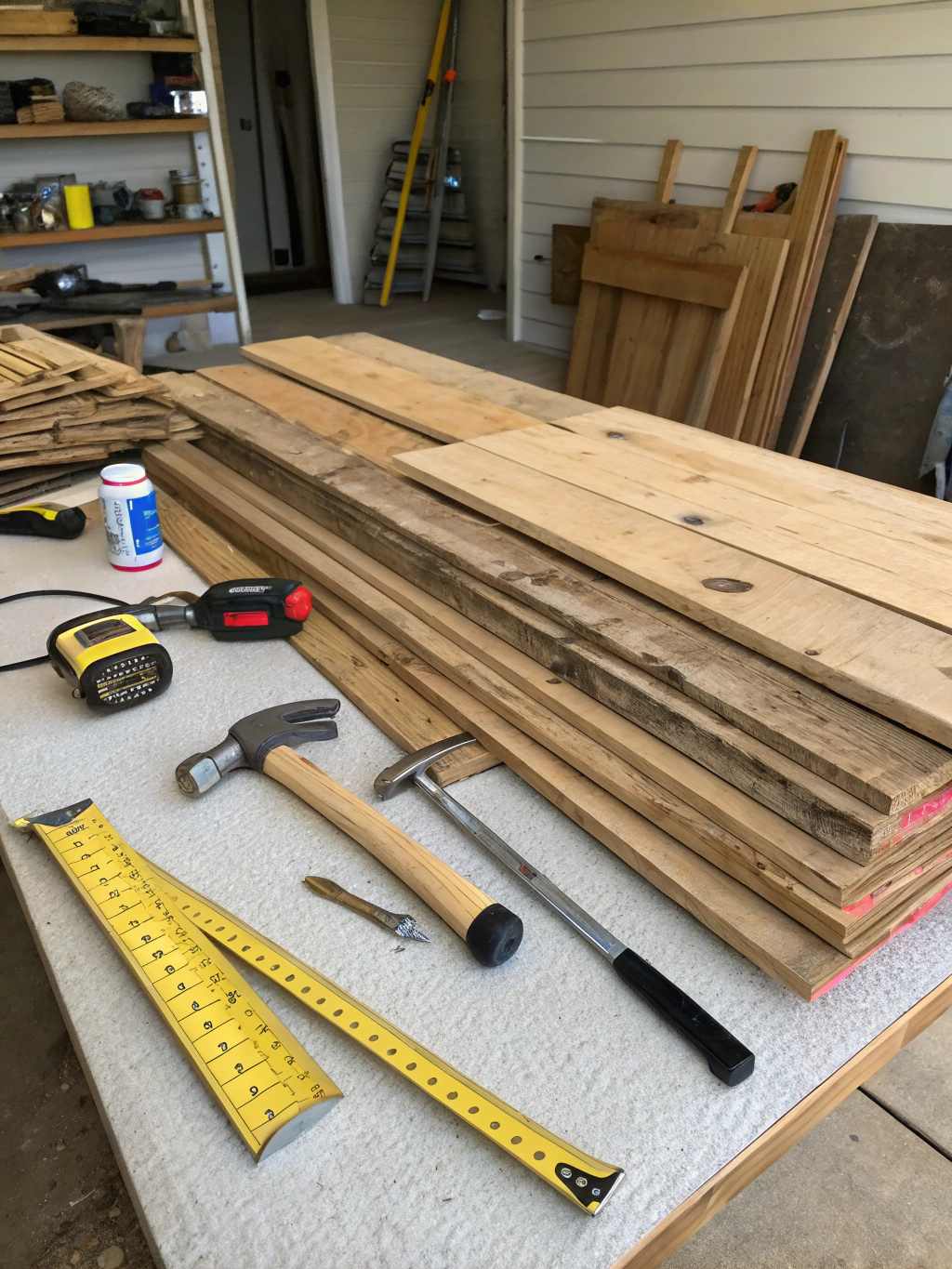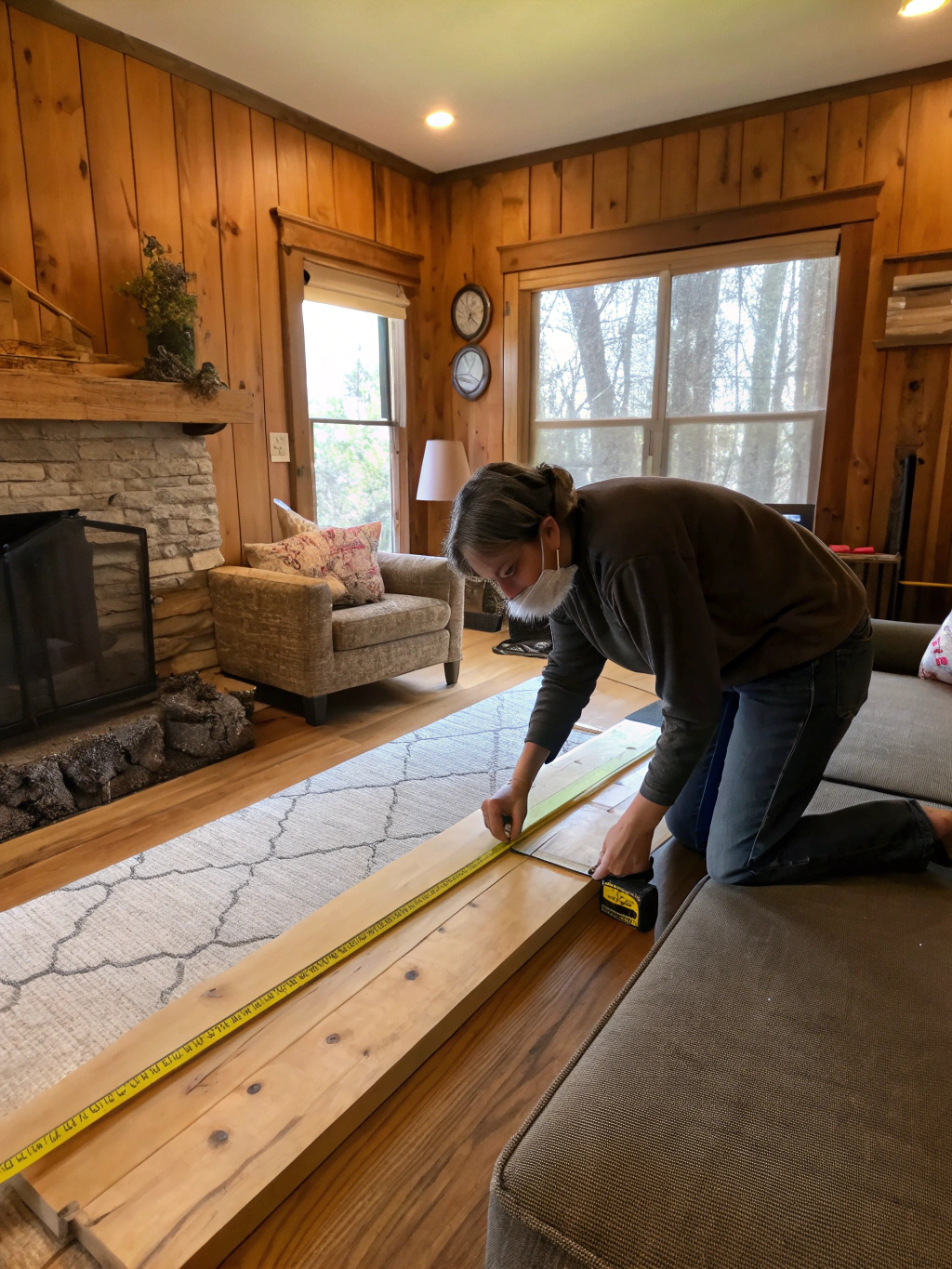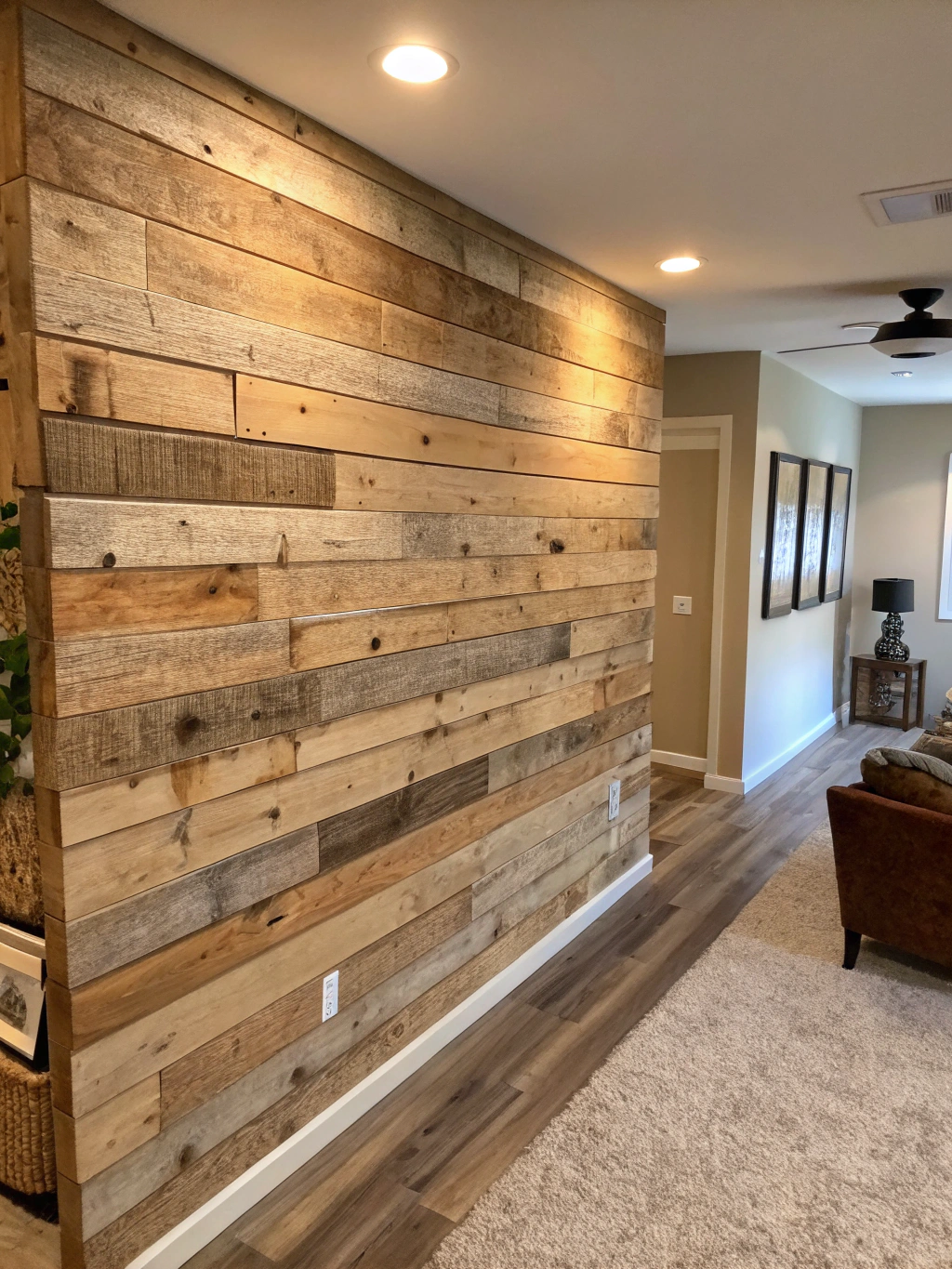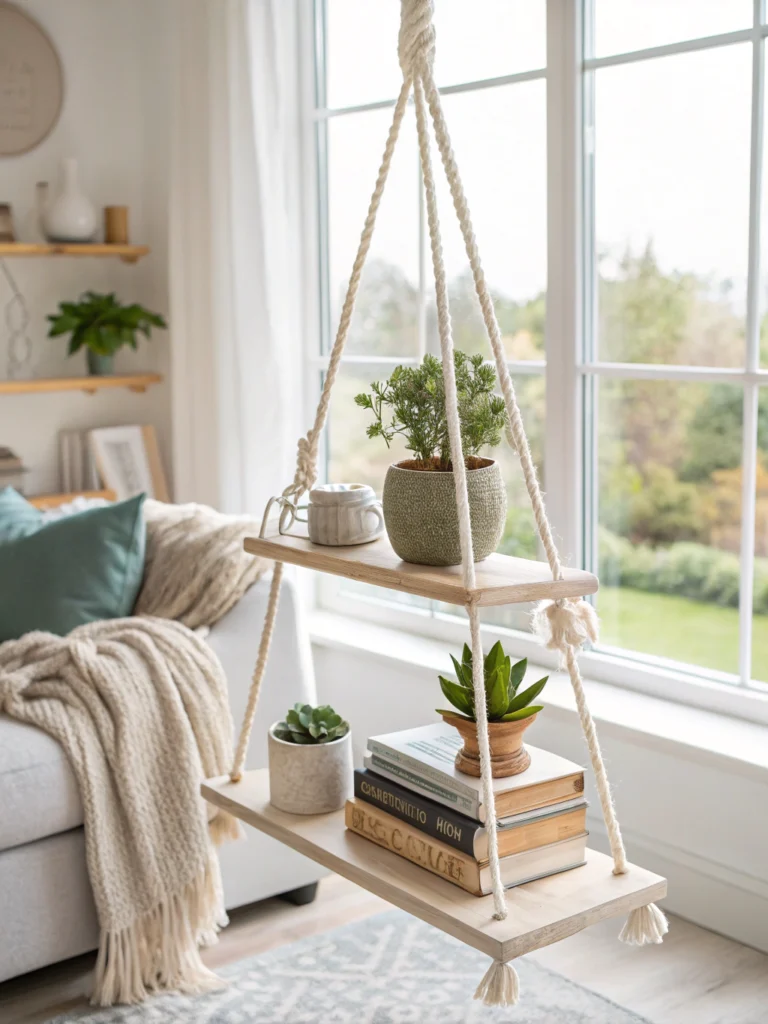Introduction
Tired of staring at that same old, boring wall? Dreaming of adding a touch of rustic charm, modern flair, or cozy warmth to your living room, bedroom, or even your home office? Well, you’ve come to the right place! A DIY wood plank wall is a fantastic, budget-friendly way to completely transform a space and inject some serious personality. It might seem daunting at first, but trust me, with a little guidance, even a novice DIYer can achieve stunning, professional-looking results.
This comprehensive guide will walk you through everything you need to know, offering five essential tips to ensure your project is a resounding success. Forget expensive contractors; it’s time to roll up your sleeves and create a feature wall that will have your friends and family oohing and aahing. Let’s dive into the world of DIY wood plank walls and make your home improvement dreams a reality!
Table of Contents

*Caption: Elevate your home’s aesthetic with a stunning DIY wood plank wall – easier than you think!*
What You’ll Need
Before you even think about prying open a can of wood stain or firing up that nail gun, let’s get organized. Having all your materials and tools ready to go will make the entire process smoother and much more enjoyable. Nothing stalls a project faster than having to make multiple trips to the hardware store!

*Caption: Gather these essentials before starting your DIY wood plank wall project.*
Here’s a checklist of what you’ll typically need for your DIY wood plank wall adventure:
Materials:
- Wood Planks: This is the star of the show! Options range from reclaimed pallet wood (for a rustic vibe) to new pine or cedar boards, or even engineered wood products designed for accent walls. Consider the thickness, width, and finish you desire. You can find many “DIY wood plank wall ideas, Building a DIY wood plank wall, How to install a DIY wood plank wall,” online to help you choose.
- Construction Adhesive: A strong adhesive is crucial for ensuring your planks stay put, especially if you’re aiming for a nail-free look or installing over a less-than-perfect surface.
- Finishing Nails (or Brad Nails): If you’re using a nail gun, these will provide extra security. Choose a length appropriate for your plank thickness and wall material.
- Wood Filler/Putty: To fill any nail holes or small gaps for a seamless finish. Match this to your stain or paint color.
- Sandpaper: Various grits (e.g., 80, 120, 220) for smoothing planks before and after installation, and potentially for distressing.
- Wood Stain or Paint: To achieve your desired color and protect the wood.
- Polyurethane or Sealer (optional): Adds a protective topcoat, especially recommended for high-traffic areas or bathrooms.
- Painter’s Tape: For protecting adjacent walls or ceilings.
- Cleaning Supplies: Rags, mineral spirits (if using oil-based stain).
Tools:
- Measuring Tape: Accuracy is key!
- Pencil: For marking cuts and stud locations.
- Level (4-foot or longer recommended): Absolutely essential for straight, professional-looking rows.
- Stud Finder: To locate wall studs for secure nailing.
- Miter Saw or Hand Saw with Miter Box: For making precise straight and angled cuts. A miter saw will make this much faster and easier.
- Jigsaw (optional): Useful for cutting around outlets or other obstacles.
- Nail Gun (Brad Nailer or Finish Nailer) & Air Compressor (optional but highly recommended): Will significantly speed up the installation process. If not, a good old hammer will do.
- Caulking Gun: For applying construction adhesive.
- Putty Knife: For applying wood filler.
- Safety Glasses: Non-negotiable! Protect your eyes.
- Dust Mask: Especially important when sanding or cutting.
- Gloves: To protect your hands.
- Utility Knife: For scoring and various small tasks.
- Pry Bar (optional): If you need to remove existing baseboards or trim.
Having these items on hand will set you up for a successful DIY wood plank wall project. Remember to always prioritize safety – wear your protective gear!
Step-by-Step Guide: Building Your DIY Wood Plank Wall
Alright, DIY warriors, it’s time to get down to business! We’ve gathered our supplies, our creative juices are flowing, and that blank wall is just begging for a transformation. Follow these steps carefully, and you’ll be admiring your handiwork in no time.
Step 1: Prepare Your Wall and Planks
Before you even think about attaching a single plank, preparation is paramount. A little extra effort here will pay off big time in the final result.
First, clear the wall completely. Remove any artwork, shelves, switch plates, and outlet covers. Give the wall a good wipe-down to remove dust and grime. If there are any significant holes or damage, patch them up with spackle and let it dry.
Next, use your stud finder to locate and mark the wall studs. Mark their locations lightly with a pencil near the ceiling and floor. You’ll use these marks later to ensure your nails (if you’re using them) hit solid wood for a secure hold. Some people like to snap chalk lines to mark the stud centers vertically down the wall.
Now, let’s talk planks. Acclimatize your wood! This is a crucial step many people skip. Wood expands and contracts with changes in temperature and humidity. Bring your wood planks into the room where they’ll be installed at least 48-72 hours beforehand. This allows them to adjust to the room’s environment, preventing unsightly gaps or buckling later on.
While the wood is acclimating, inspect each plank. If you’re going for a rustic look, some imperfections are fine, but you might want to sand down any particularly rough spots or splinters. If you plan to paint or stain your planks, now is often the easiest time to do it, before they’re on the wall. Apply your chosen finish according to the manufacturer’s instructions, allowing ample drying time. Doing this before installation saves you from tedious cutting-in and potential drips on your floor. However, some prefer to stain or paint after installation to ensure consistent coloring over cut ends – it’s a matter of preference and project complexity.

*Caption: Step 1 in action: Preparing the wall and letting your wood planks acclimate is key for a successful DIY wood plank wall.*
Why this matters: Proper wall prep ensures a smooth, clean surface for adhesion and nailing. Acclimating wood prevents future warping or gapping. Pre-finishing planks can save a lot of time and mess.
Common pitfalls: Skipping wood acclimation, not finding studs accurately, or trying to install over a dirty or damaged wall.
Step 2: Measure, Plan Your Layout, and Make Your First Cuts
With your wall prepped and planks ready, it’s time for the fun part – planning your design! This is where your “DIY wood plank wall ideas, Building a DIY wood plank wall, How to install a DIY wood plank wall,” come into play.
Decide on the orientation of your planks: horizontal, vertical, or even a herringbone pattern (though herringbone is significantly more complex). Horizontal planks tend to make a room feel wider, while vertical planks can make a ceiling feel higher. For this guide, we’ll focus on a standard horizontal installation.
Measure the height and width of your wall. This will help you estimate the total number of planks needed if you haven’t already purchased them (always buy about 10-15% extra for cuts and mistakes).
A critical decision is your starting point. Most people start at the bottom or top. Starting at the bottom is often easier for beginners as you can rest the first row on the baseboard (or a temporary ledger board if baseboards are removed). However, starting at the top ensures a full plank is visible at eye level and any partial plank will be less noticeable near the floor. If your ceiling isn’t perfectly level (few are!), starting at the top might highlight this. For this guide, we’ll assume a bottom-up approach, ensuring the first row is perfectly level.
Use your level to draw a perfectly horizontal starting line for your first row of planks. Don’t assume your floor or baseboard is level – always check! If you’re removing baseboards, you can snap this line directly on the wall. If keeping them, you can start your first row directly above the baseboard.
Now, plan your stagger. You don’t want the seams between planks to line up vertically in adjacent rows, as this looks unnatural and can weaken the overall structure. A random stagger is usually best. Aim for at least 6-8 inches of offset between seams in adjacent rows. Some people like to pre-cut a variety of plank lengths to help with this.
Once you have your starting line and a general idea of your stagger, it’s time for the first cuts. Measure the length needed for your first plank. Transfer this measurement to a plank and use your miter saw (or hand saw and miter box) to make a clean, straight cut. It’s a good idea to lightly sand the cut edge.
Why this matters: A well-thought-out layout and precise first row are foundational. A good stagger improves aesthetics and structural integrity.
Common pitfalls: Not using a level for the first row, seams aligning vertically, inaccurate measurements leading to wasted wood.
Step 3: Installing the First Row of Your DIY Wood Plank Wall
The first row is arguably the most important. Get this one right, and the rest of your DIY wood plank wall project will go much smoother.
Take your first cut plank. Apply a generous zigzag or S-shaped bead of construction adhesive to the back. Don’t skimp here, but also avoid applying too close to the edges where it might squeeze out excessively.
Carefully position the plank along your level starting line. Press it firmly against the wall for a few seconds to allow the adhesive to grab.
Now, it’s time for mechanical fastening. If you’re using a nail gun, drive brad nails or finishing nails through the plank and into the wall studs you marked earlier. Angle the nails slightly if possible. If you’re nailing into the tongue of tongue-and-groove planks (if using), this is called blind nailing and hides the nail heads. For face nailing (planks without a tongue, or for extra security), try to place nails where they’ll be less conspicuous or where you plan to fill them later. If using a hammer and nails, pre-drilling pilot holes can prevent the wood from splitting, especially near the ends of planks.
Check for level again! Before moving on, place your level on top of the installed plank. If it’s not perfectly level, make slight adjustments before the adhesive fully sets and before nailing it completely. This is your last chance to easily correct any issues with this crucial first row.
Continue installing planks along the first row, end to end. Remember your stagger plan! For subsequent planks in the first row, you might apply a little wood glue to the butt-end of the plank where it meets the previous one, for a tighter joint, then wipe away any excess immediately with a damp rag.
Why this matters: A perfectly level and securely attached first row provides the foundation for the entire wall. Any errors here will be amplified as you move up.
Common pitfalls: First row not being level, insufficient adhesive, not hitting studs with nails, visible adhesive squeeze-out that isn’t cleaned up.
Step 4: Continuing Up the Wall
With the first row beautifully in place and perfectly level, subsequent rows will feel much easier. The process is largely a repetition of measuring, cutting, gluing, and nailing.
Start your second row, ensuring the end seam is staggered from the seam in the row below it. Apply adhesive and nail this plank into place, ensuring it sits tightly against the top edge of the row below it. Use your level occasionally to double-check that your rows are staying horizontal, especially every 3-4 rows. Minor adjustments can be made by slightly tapping planks up or down before nailing.
When you reach an electrical outlet or light switch, you’ll need to cut your plank to fit around it. Turn off the power to that outlet at the breaker first! Remove the cover plate. Hold the plank in position and carefully mark where it needs to be cut to accommodate the outlet box. A jigsaw or a multi-tool with a wood-cutting blade is ideal for these types of cuts.
You can also use a drill to create starting holes for your jigsaw blade. Take your time with these cuts; it’s better to cut a little too small and trim than to cut too large and have a noticeable gap. Outlet extenders (box extenders) might be necessary to bring the outlet flush with the new wall surface.
Continue working your way up the wall, row by row. Vary your plank lengths to maintain a random, natural-looking stagger. This is where having some pre-cut planks of different lengths can speed things up. If you’re using reclaimed wood, mix up the colors and textures for a more authentic look.
If your planks have any slight bowing or warping (common with natural wood), you can sometimes use painter’s tape to temporarily hold a bowed section tight against the wall or the plank below while the adhesive sets, or use a clamp if you have a way to secure it. For more significant bows, it might be better to cut that section out or use that plank for shorter pieces.
Why this matters: Consistent technique and attention to detail ensure a uniform and professional appearance. Proper staggering prevents a “striped” or unnatural look.
Common pitfalls: Rows becoming unlevel, sloppy cuts around outlets, not maintaining a good stagger, forcing warped boards which can cause problems later.
Step 5: The Final Row and Finishing Touches for Your DIY Wood Plank Wall
You’re almost there! The last row can sometimes be a bit tricky, especially if it needs to be ripped (cut lengthwise) to fit.
Measure the remaining gap between the top of your last full row and the ceiling (or crown molding, if present). Measure this gap at several points along the wall, as ceilings are rarely perfectly level. You’ll likely need to rip your final row of planks to this varying height.
Use a table saw (ideal for long, straight rip cuts) or a circular saw with a guide to rip the planks for the final row. If the gap is very small, a jigsaw or even a hand plane might work. Remember to account for any tongue if you’re using tongue-and-groove planks.
Install the final ripped planks using adhesive and nails. Nailing can be tricky this close to the ceiling. You might need to face-nail carefully or use an angled nailer.
Once all planks are installed, it’s time for the finishing touches that elevate your DIY wood plank wall from “good” to “great.” Fill any visible nail holes or small gaps between planks with wood filler or putty that matches your wood or stain color. Apply it with a putty knife, let it dry, and then lightly sand it smooth.
If you didn’t pre-finish your planks, now is the time to stain or paint your newly installed wall. Use painter’s tape to protect the ceiling, adjacent walls, and any trim. Apply your finish according to the manufacturer’s instructions. If you did pre-finish, you might just need to do some light touch-ups on cut ends or filled nail holes.
Reinstall your outlet covers (you may need longer screws if the wall is now thicker) and switch plates. If you removed baseboards or other trim, reinstall them now. Caulking along the edges where the plank wall meets the ceiling, adjacent walls, or trim can give a very clean, professional finish.
Stand back and admire your incredible work! You’ve just completed a major home upgrade with your own two hands.
Why this matters: The final row and finishing details are what give the project a polished, professional look. Attention to these small things makes a big difference.
Common pitfalls: Inaccurate measurements for the final row, messy rip cuts, skipping nail hole filling or touch-up staining/painting, poorly reinstalled trim or outlet covers.
The Stunning Final Result!
And there you have it – a breathtaking DIY wood plank wall that has completely transformed your space! Take a moment to soak it all in. The texture, the warmth, the character… it’s all thanks to your hard work and creativity. This isn’t just a wall; it’s a statement piece, a testament to your DIY prowess.

*Caption: The final result: A gorgeous DIY wood plank wall that adds warmth and character to the room.*
Whether you opted for a rustic reclaimed wood look, a sleek modern painted finish, or anything in between, your new feature wall is sure to be a conversation starter. It’s amazing how a relatively simple project can have such a dramatic impact on the feel of a room. You’ve not only added aesthetic value but also a personal touch that makes your house truly a home. For more inspiration on different styles and advanced techniques, you might want to explore additional DIY wood plank wall tutorials.
We’d absolutely love to see what you’ve created! Share photos of your finished DIY wood plank wall in the comments below, or tag us on social media. Got any extra tips or tricks you discovered along the way? Share those too – let’s build a community of inspired DIYers!
Pro Tips & FAQs for Your DIY Wood Plank Wall
Even with the best guide, questions can pop up. Here are some pro tips and answers to frequently asked questions to help you nail your DIY wood plank wall project.
Q1: What’s the cheapest way to do a DIY wood plank wall?
A: The most budget-friendly option is often using reclaimed pallet wood. Pallets can frequently be sourced for free or very cheaply. However, be prepared for more prep work – disassembling pallets, cleaning the wood, and removing nails. Another cost-effective choice is using common pine boards (like 1x4s or 1x6s) and distressing or staining them yourself to achieve the desired look. Always compare prices for new lumber versus pre-finished paneling options when considering [“DIY wood plank wall ideas, Building a DIY wood plank wall, How to install a DIY wood plank wall,”](https://www.hgtv.com/design/make-and-celebrate/handmade/diy-decor-projects-to-craft-this-weekend-pictures).
Q2: How do I calculate how much wood I need for my plank wall?
A: First, calculate the square footage of the wall you want to cover (height in feet x width in feet). Then, determine the square footage coverage of one plank (length in feet x width in feet – or convert inches to feet by dividing by 12). Divide the wall’s square footage by the plank’s square footage to get the number of planks. Crucially, always add 10-15% extra for cuts, mistakes, and waste. It’s better to have a little leftover than to run short mid-project!
Q3: Can I install a DIY wood plank wall over textured walls?
A: Yes, you generally can. If the texture is light (like orange peel), construction adhesive and nails into studs should be sufficient. For heavier textures (like popcorn or knockdown), you might consider a few options:
1. Scrape down the high points of the texture for better adhesion.
2. Install thin furring strips (1x2s) horizontally onto the studs first, then attach your planks to the furring strips. This creates a flat, even surface.
3. Use a thicker bead of adhesive.
Always ensure your planks are making good contact with the wall or furring strips for a secure installation.
Q4: What are some popular “DIY wood plank wall ideas”? And how do I choose a finish?
A: Popular ideas include rustic reclaimed wood, shiplap (often painted white for a farmhouse look), a herringbone pattern, vertical planks, or even a mix of different wood stains for a multi-tonal effect. When choosing a finish for your DIY wood plank wall:
– **Stain:** Enhances the natural wood grain. Comes in various colors from light to dark.
– **Paint:** Offers a solid color, great for modern or farmhouse styles. You can also distress painted planks for a vintage look.
– **Whitewash/Pickling Stain:** Gives a light, airy, coastal feel.
– **Natural/Clear Coat:** Protects the wood while keeping its natural color.
Consider the existing decor of your room, the amount of natural light, and the overall vibe you want to achieve. Test finishes on scrap pieces of your chosen wood first!
Q5: How do I maintain and clean my new wood plank wall?
A: Maintenance is generally quite simple. For regular cleaning, dust the wall with a soft cloth, a feather duster, or the brush attachment of your vacuum cleaner. For light scuffs or dirt, you can usually wipe the area with a slightly damp (not wet!) cloth. If your wall is stained and sealed with polyurethane, it will be more resistant to moisture and easier to clean. Avoid harsh chemical cleaners, as they can damage the wood finish. If you used reclaimed wood, its inherent imperfections often hide minor wear and tear well!
Building a DIY wood plank wall is a rewarding project that adds significant value and personality to your home. We hope these tips and this guide have inspired you to take the plunge!
Ready to transform your space? Don’t forget to check out more home improvement guides and DIY wood plank wall inspiration on our site. If you found this guide helpful, please share it with your fellow DIY enthusiasts! We’d love to hear your thoughts and see your amazing project results in the comments below. Happy building!


